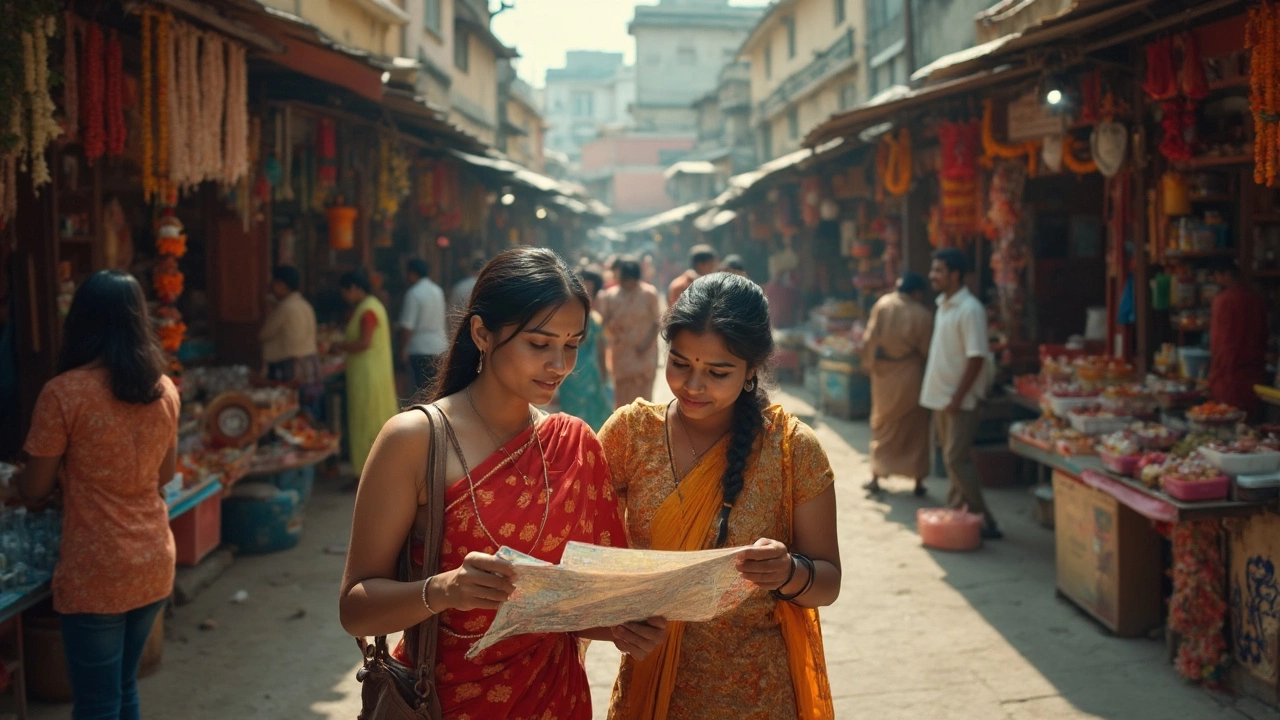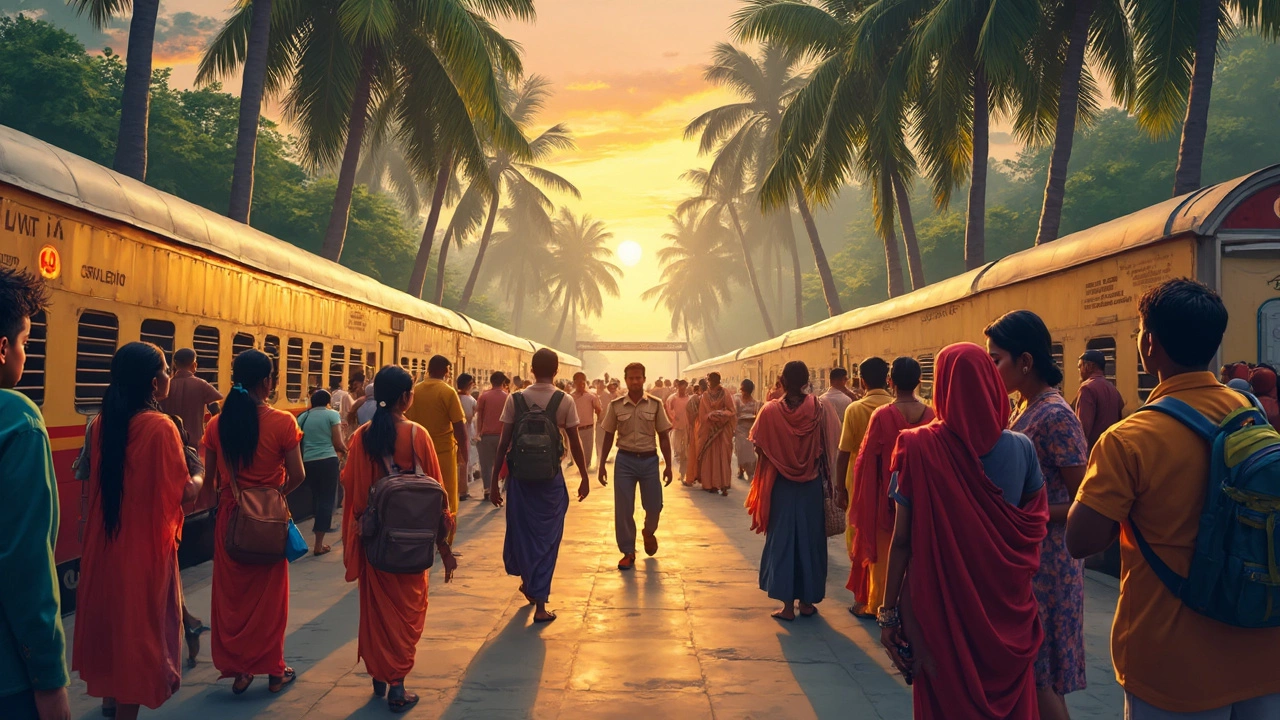Travel safety isn’t just about numbers on a chart, but let’s get real—most lists put Iceland at the top when people google “safest country in the world.” But what does that mean for you if your sights (and flights) are set for South India?
South India doesn’t grab headlines for high crime rates or tourist scams the way some hot spots do. Places like Kerala, Tamil Nadu, and Karnataka are known for their friendly locals and laid-back vibe. You can walk around cities like Kochi or Mysore after dark without that nagging worry you get in some other parts of the world.
Still, knowing what’s officially rated “safest” is good info, but being street-smart in South India can sometimes make more difference than any country ranking. The real question isn’t just which country wins the “safety” trophy, but what you can expect as you hit the ground in this colorful corner of India.
- Who Ranks as the Safest Country?
- How Safe Is South India Really?
- On-the-Ground Travel Safety Tips
- Surprising Realities: Beyond the Numbers
Who Ranks as the Safest Country?
If you Google “safest country in the world,” Iceland pops up just about everywhere. For over a decade, Iceland’s held the top spot in the Global Peace Index—an annual report by the Institute for Economics and Peace. No army, nearly non-existent crime, and the vibe on the street is so relaxed that even the police are unarmed. It’s not just tourist blogs making this up—the hard numbers back it up.
| Country | Global Peace Index 2024 Rank | Violent Crime Rate (per 100,000) |
|---|---|---|
| Iceland | 1 | Less than 1 |
| Denmark | 2 | 59 |
| Ireland | 3 | 76 |
| New Zealand | 4 | 57 |
The Global Peace Index looks at stuff like crime, trust in police, political stability, and social safety nets. So, when you see Iceland, Denmark, and New Zealand topping nearly every safety list, that’s legit research—not just word of mouth. Tourists there can walk solo at night, rarely worry about theft, and deal with almost no scams.
But here’s the kicker: these rankings are how whole countries stack up. Travelers should keep in mind that even the "safest" country can have the occasional pickpocket and that “dangerous” areas sometimes just mean a city neighborhood you wouldn’t walk after midnight, just like anywhere else. Use these global rankings as a foundation, not the whole picture, when choosing your next destination.
How Safe Is South India Really?
South India actually stacks up pretty well when you compare it to other travel spots, even inside India. The cities and beach towns here are known for being chilled out. Do you worry about violent crime? In places like Kerala, Tamil Nadu, and Andhra Pradesh, the rates are low, especially when you stick to public spaces and touristy areas.
Take Kochi or Puducherry—these places draw families and solo travelers because locals are generally helpful, and the culture has a relaxed edge. It’s rare to hear about problems like pickpocketing or scams here compared to the big metros up north. Women travelers say they feel safer walking or catching an auto in cities like Mysore or Thiruvananthapuram than they do in many other parts of the country.
Of course, there are things to keep in mind. Petty theft does happen, especially in crowded bus stations or markets. Beaches get busy on weekends, so watch your bags. Plus, traffic in cities like Bangalore isn’t a joke, so crossing the street might honestly be the “riskiest” part of your trip.
If you’re a foreign traveler, the police in most South Indian cities are used to tourists and offer English support in central districts. Hospitals, too, are decent and accessible if you run into health problems. Don’t skip your travel insurance, but know that most travelers leave South India with good memories and zero horror stories.
If you focus on common sense, like watching your stuff in busy places and following local advice, you’ll quickly see why South India gets top marks for travel safety. Locals have a reputation for hospitality, and that goes a long way. Whether you’re exploring temples in Madurai or catching sunrise in Hampi, low-key vibes are the norm, not the exception.

On-the-Ground Travel Safety Tips
Heading out in South India can feel a lot easier than you think, but it helps to know what works on the ground. Most people visit big cities like Chennai and Bengaluru or take off to chill towns in Kerala and Goa, so it pays to get the lay of the land. Here's how to keep things smooth and hassle-free.
- Keep your ride plans clear. Public transport is safe, but book train tickets on official apps like IRCTC or at the station itself to skip touts.
- Only use prepaid or app-based taxis (like Ola or Uber). Skip random rickshaw rides after dark, especially if you can't pin your location.
- Hold onto your stuff. Petty theft happens—a cross-body bag or zipped backpack works way better than slinging a purse on your shoulder.
- Be picky with your cash. Credit cards are cool in bigger spots, but always have a bit of cash for tea stalls or cab fare where cards won't cut it.
- Ask locals or hotel workers about any trouble spots. People are usually upfront if a beach or street gets dicey at certain times.
- Pack light but smart. Sunscreen, water bottles, and sandals are essentials, but don’t forget a basic medicine kit for small scrapes or upsets.
Got an emergency? The police helpline across South India is 100, and ambulance is 102. Most touristy cities also have dedicated help desks for visitors at train stations and airports.
To give you the lowdown, here are stats travelers in South India might care about. These numbers are from the National Crime Records Bureau 2023 and show why travelers tend to feel safe around here:
| City | Reported Crime Rate (per 100,000 people) | % of Crimes Against Tourists |
|---|---|---|
| Kochi | 178 | 0.4% |
| Bangalore | 210 | 0.7% |
| Chennai | 195 | 0.5% |
| Thiruvananthapuram | 162 | 0.3% |
Those numbers are way lower than most big tourist cities around the world. Locals look out for visitors, so if you ever feel off, don’t hesitate to ask someone nearby. In short, trust official services, keep it simple, and you’ll find South India is about as welcoming—and safest country-level—as it gets.
Surprising Realities: Beyond the Numbers
Here’s where things get interesting. Most travel writers will throw statistics at you, but those numbers don’t always match what happens when you’re really out there, suitcase in hand. South India’s day-to-day vibe is a lot safer than outsiders expect, not just compared to the rest of India but also when stacked up against several so-called "safe" countries. Cities like Chennai, Bengaluru, and Kochi consistently report lower violent crime rates than many big cities in the US or even parts of Europe. For example, Bengaluru’s crime index (Numbeo, 2024) is around 44, which is lower than New York City’s (around 50).
Still, every traveler should know that safety isn’t just about dodging crime. Health risks, scams, and cultural slip-ups matter, too. In South India, pickpocketing is rare but does happen in crowded markets. Traffic is the biggest risk—crossing a busy street in Hyderabad can spike your heart rate faster than any mugger.
Here’s a quick breakdown for you:
| City | Crime Index | Common Issues |
|---|---|---|
| Chennai | 38 | Pocket theft, minor scams |
| Kochi | 36 | Petty theft, rare scams |
| Bengaluru | 44 | Pickpocketing, traffic accidents |
| New York | 50 | Purse-snatching, street crime |
But let’s not sugarcoat it. Medical care in private South Indian hospitals is solid, but rural areas can’t match that level. Pay attention to local health tips—drink bottled water and don’t skip your vaccines for dengue and typhoid. Follow local advice about mosquitoes, and you’ll skip most of the headaches.
Tourists—especially solo women—actually report a strong sense of comfort in places like Kerala. It’s not perfect, but it’s surprisingly good, and the sense of hospitality is real. Coat that with some basic street smarts, and South India feels safer than expected. Just remember, "safest country" lists are a starting point. Local rules and personal habits play a huge part in keeping your trip smooth.
